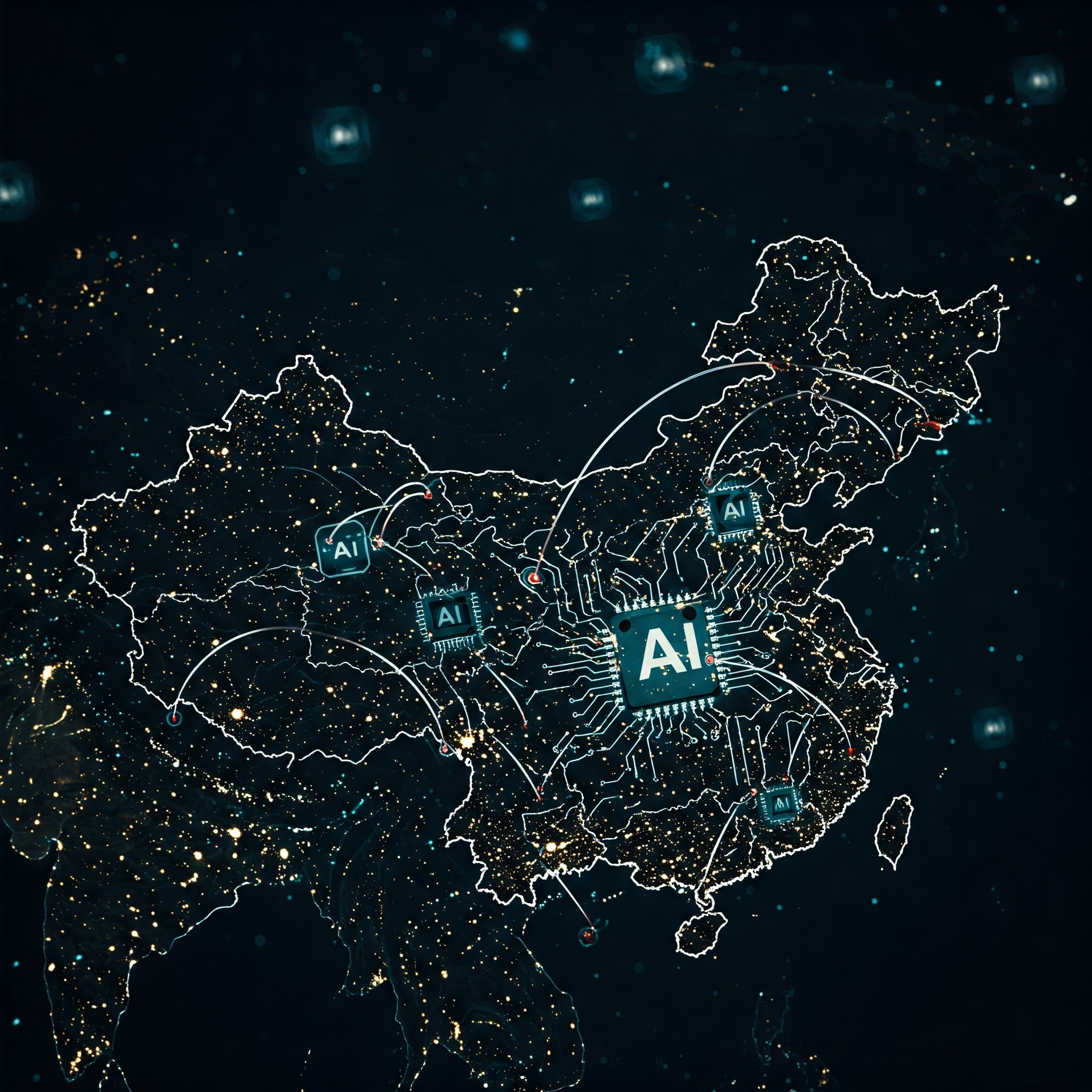Artificial Intelligence (AI) has emerged as the defining technology of the 21st century, shaping economies, military capabilities, healthcare, and everyday life. While the United States has traditionally led in AI development, China is rapidly catching up, backed by state-driven ambition, substantial investment, and a clear national strategy. This blog explores China’s AI trajectory, key players, achievements, and the implications of its rise for the global balance of power.
1. Laying the Foundation: China’s AI Vision and Strategy
1.1 The 2017 New Generation AI Development Plan
In July 2017, China unveiled its “New Generation Artificial Intelligence Development Plan”, a state-level initiative that established AI as a national priority. The plan set three milestones:
- By 2020: Be on par with the world’s leading AI countries.
- By 2025: Achieve major breakthroughs in AI theory and application.
- By 2030: Become the global leader in AI.
1.2 Strategic Sectors and Goals
China identified several core areas for AI implementation:
- Smart manufacturing
- Autonomous vehicles
- Smart cities
- Healthcare and biotechnology
- National defense and cybersecurity
The government also established a standardized AI curriculum across educational institutions to nurture home-grown talent.
2. State-Driven Innovation: How Policy Powers Progress
2.1 Centralized Planning and Resource Allocation
Unlike Western democracies, China’s centralized political system enables swift policy execution and resource mobilization. This has led to:
- Massive funding in R&D
- Creation of AI industrial parks
- Tax incentives and subsidies for tech firms
2.2 Public-Private Collaboration
Tech giants like Baidu, Tencent, Alibaba, and Huawei work closely with the government. These companies often serve as national AI champions, responsible for developing AI in specific sectors:
- Baidu: Autonomous driving
- Tencent: AI in healthcare
- Alibaba: Smart cities and cloud computing
- Huawei: AI chipsets and hardware
3. Technological Breakthroughs and Global Impact
3.1 Computer Vision and Surveillance
China leads in facial recognition and computer vision applications, largely driven by domestic demand for public security. Companies like SenseTime and Megvii are world leaders in this field.
3.2 Natural Language Processing (NLP)
Firms such as iFLYTEK have pioneered real-time translation and voice recognition technologies used in education, healthcare, and judicial systems.
3.3 Chip Development and AI Infrastructure
Despite U.S. restrictions, China has invested heavily in self-reliant semiconductor capabilities. Huawei’s Ascend chips and Alibaba’s Hanguang AI chips are significant strides toward reducing dependency on foreign technology.
4. The Role of Data: Fueling the AI Engine
China’s population and digital ecosystem generate vast amounts of data, the essential ingredient for training AI algorithms. The country has:
- Over 1 billion internet users
- An advanced mobile payment ecosystem
- Nationwide surveillance infrastructure
This provides an unparalleled training ground for AI models, giving Chinese firms a data advantage that Western competitors often lack due to privacy regulations.
5. Ethical Challenges and International Concerns
5.1 Privacy and Surveillance
The global community has expressed concern over China’s use of AI for domestic surveillance, especially in regions like Xinjiang. Critics argue this raises serious ethical questions about privacy, consent, and state control.
5.2 Exporting Surveillance Tech
China exports AI-driven surveillance systems to countries in Africa, Latin America, and Southeast Asia. This is often framed as digital diplomacy but raises fears of enabling authoritarianism.
5.3 AI and Military Integration
The blurred line between civilian and military applications of AI has sparked concerns about China’s civil-military fusion strategy, which could alter future warfare dynamics.
6. Education and Talent Development
6.1 AI in Academia
China has increased funding for AI research in top universities such as Tsinghua and Peking University. The number of AI-related papers published by Chinese researchers now rivals that of the U.S.
6.2 Brain Gain vs. Brain Drain
While China has long suffered from a talent outflow to the West, many researchers are returning due to improved opportunities and patriotic sentiment, especially as geopolitical tensions grow.
7. Global Competition and Cooperation
7.1 Tech Cold War?
The U.S.-China rivalry in AI mirrors the dynamics of a new Cold War. The U.S. leads in foundational models and talent, while China excels in implementation and scale.
7.2 International AI Governance
China actively participates in AI standard-setting bodies and seeks influence in organizations like the ITU and UNESCO. It aims to shape international norms and rules to better align with its interests.
7.3 Belt and Road Initiative (Digital BRI)
AI is a component of China’s Digital Silk Road, a subset of the Belt and Road Initiative. Through infrastructure and digital investments, China promotes AI partnerships across Asia, Africa, and Europe.
8. Challenges and Constraints
8.1 U.S. Sanctions and Tech Restrictions
Restrictions on exports of key technologies like high-end chips and advanced manufacturing tools threaten to slow China’s AI progress.
8.2 Innovation vs. Imitation
While China excels at scaling innovations, critics argue it still lags behind in groundbreaking innovation and foundational research.
8.3 Trust Deficit
Geopolitical tensions and concerns about data misuse contribute to a global trust deficit that Chinese tech firms struggle to overcome.
Conclusion: What the Future Holds
China’s AI strategy is a blend of state-driven ambition, corporate innovation, and international outreach. While it faces considerable obstacles, the nation’s progress in AI is undeniable and will significantly impact the global technology landscape.
For policymakers, technologists, and citizens around the world, understanding China’s AI journey is not just about geopolitics. It’s about understanding the evolving dynamics of power, ethics, and innovation in a world increasingly shaped by artificial intelligence.
Stay tuned for more in-depth insights on global AI trends, policy shifts, and technological breakthroughs.









+ There are no comments
Add yours